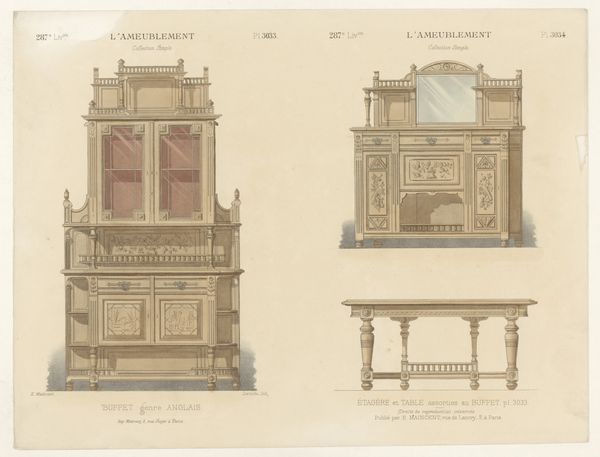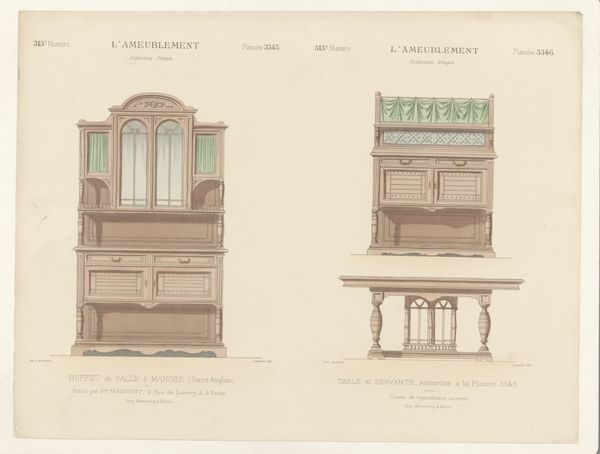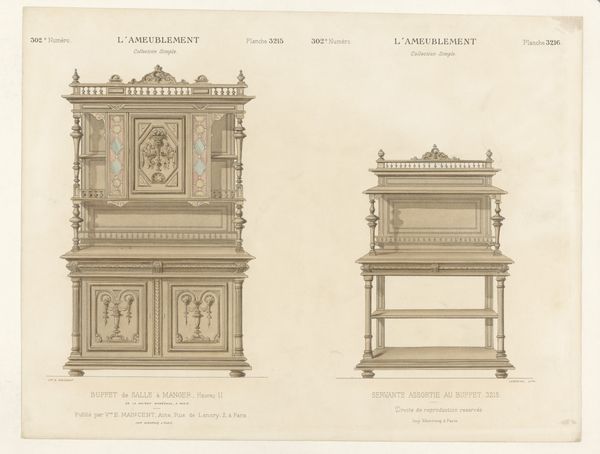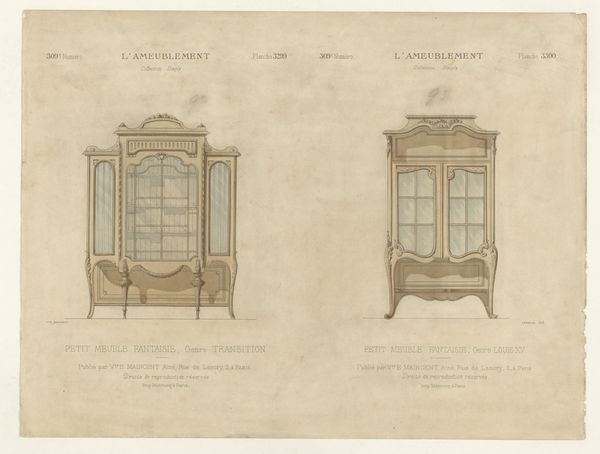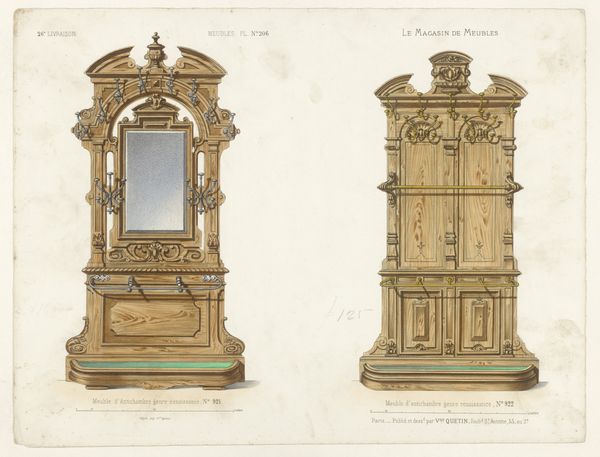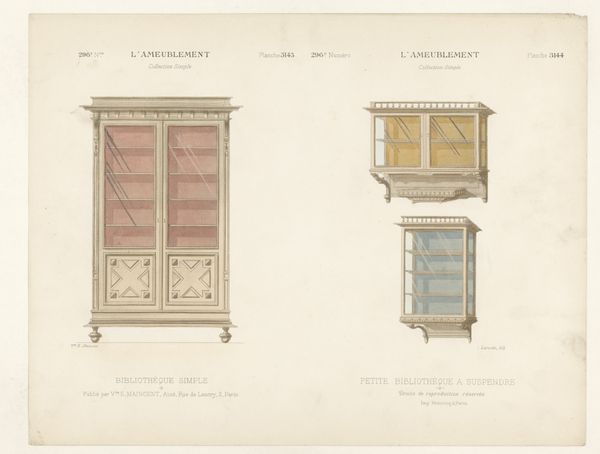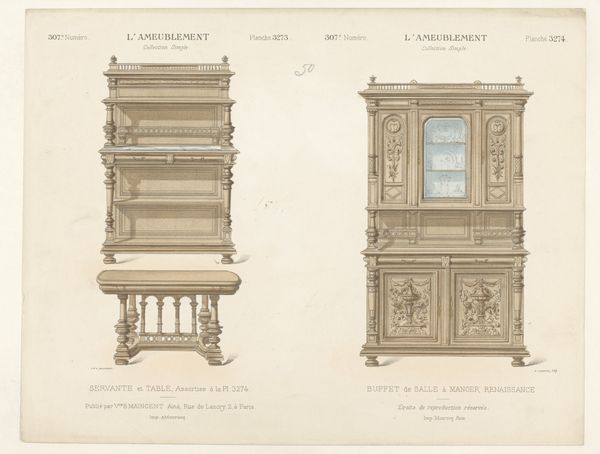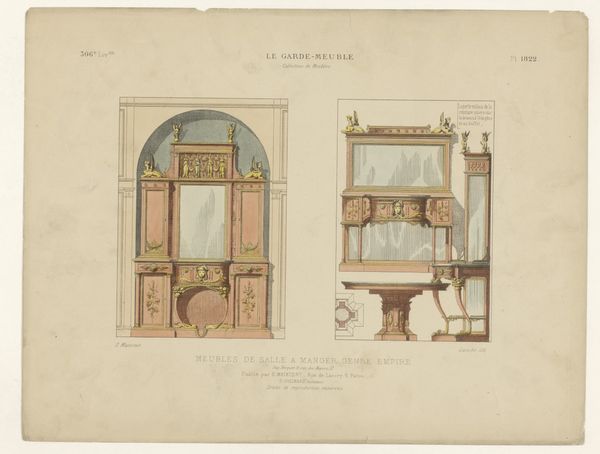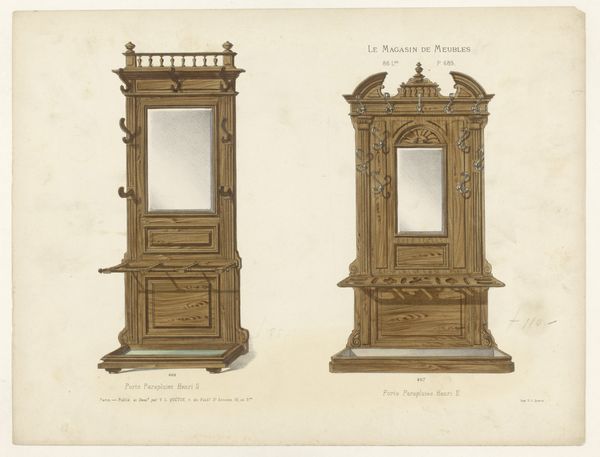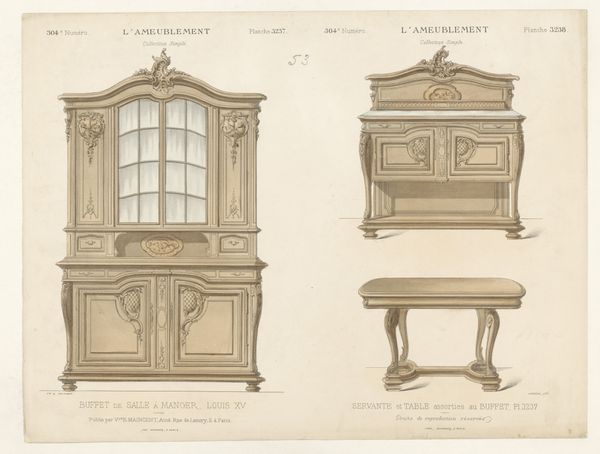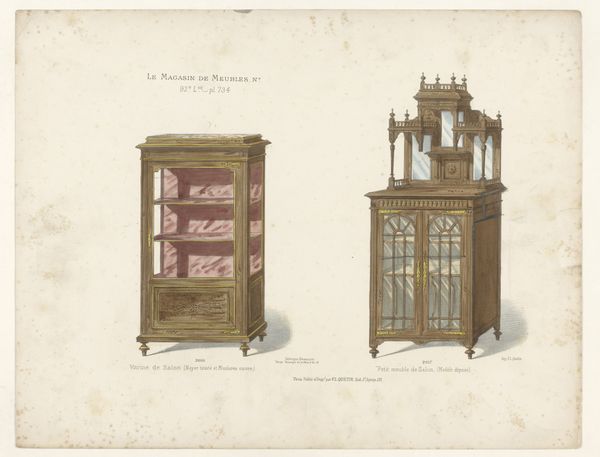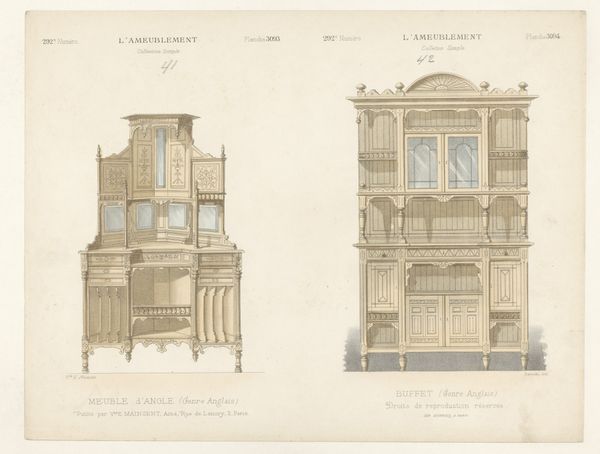
drawing, print, paper, watercolor, ink, architecture
#
drawing
#
neoclassicism
# print
#
paper
#
watercolor
#
ink
#
decorative-art
#
architecture
Dimensions: height 274 mm, width 359 mm
Copyright: Rijks Museum: Open Domain
Curator: Here we have "Twee Schouwen" or "Two Fireplaces," an 1895 print by Léon Laroche, rendered in ink and watercolor on paper. What is your initial read on this, Editor? Editor: Hmm, instantly I think, "What stately homes are burning?" No, just kidding! There's something serene and rather precise about the drawing. The fireplaces don’t radiate warmth so much as a kind of ordered elegance, perhaps even a melancholy gentility. Curator: Precisely. The composition’s duality is key. We see two distinct fireplace designs, presented almost as typological studies. Note the meticulous rendering of line and form; each element adheres to a Neoclassical vocabulary while hinting at the burgeoning decorative arts movement. Semiotically, these are symbols of domesticity and refinement. Editor: Oh, totally. It’s like peering into two possible, parallel worlds of coziness. The color palette seems carefully considered to not overwhelm; the blues, greens, and subdued browns speak of understated taste, yet it flirts with the ornate without fully committing. It's all terribly proper but quietly dramatic. The contrast between straight and rounded shapes of these mantelpieces does give a spark, though. Curator: Indeed. Consider, too, the inherent tension between the functional and the ornamental. Laroche's piece captures this perfectly: are they models for real construction or artistic representations of architectural possibilities? The medium itself reinforces this liminality, being neither pure architecture nor painting. It occupies an intermediate conceptual space. Editor: It really is more than a simple catalogue entry. And what strikes me is how eerily contemporary they appear. Take away a bit of the neoclassical frippery, tweak the tiling, and these fireplaces could almost fit seamlessly into modern designs now. They're quite timeless, I think. Curator: A fine observation, Editor. It illuminates the power of formalized systems. We extract from the particularities of the time and connect to our time because this "Genre Anglais", so meticulously diagrammed by Laroche, has enduring compositional merit. Editor: Well put. Looking again, they do invite daydreaming about other eras—where smoke curled into ornate, high ceilings and secrets were whispered behind elegant fire screens. It's lovely to glimpse the intersection of then and now here.
Comments
No comments
Be the first to comment and join the conversation on the ultimate creative platform.
